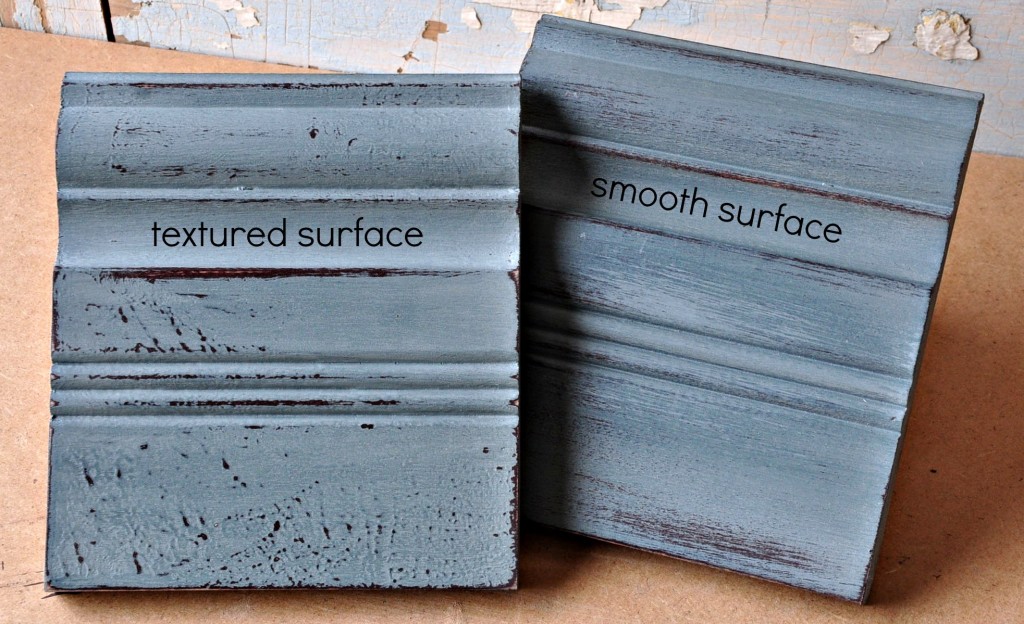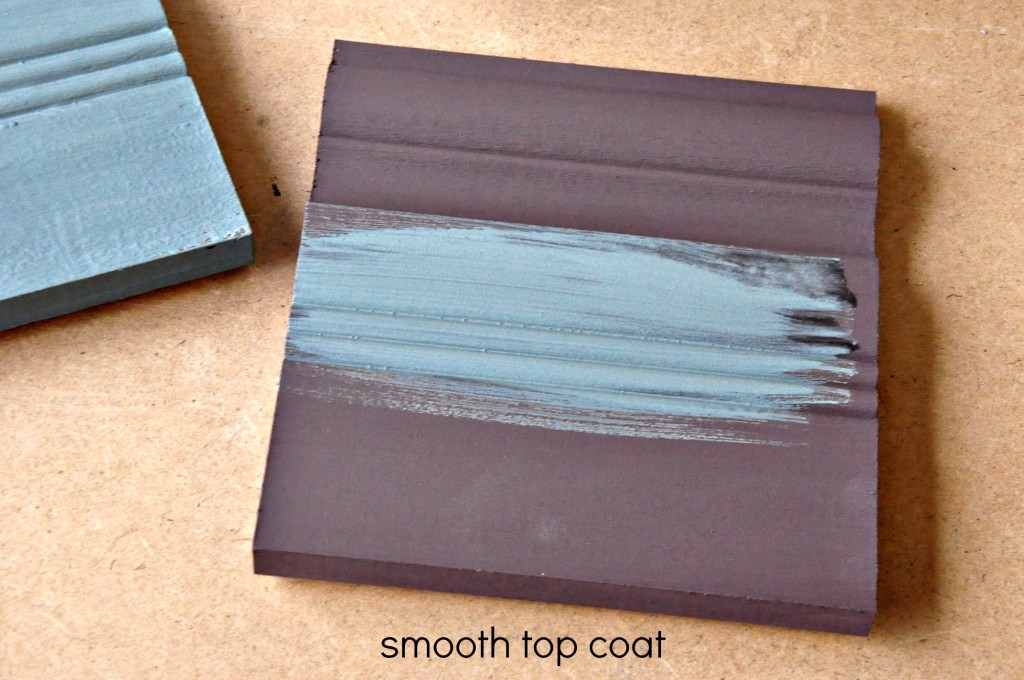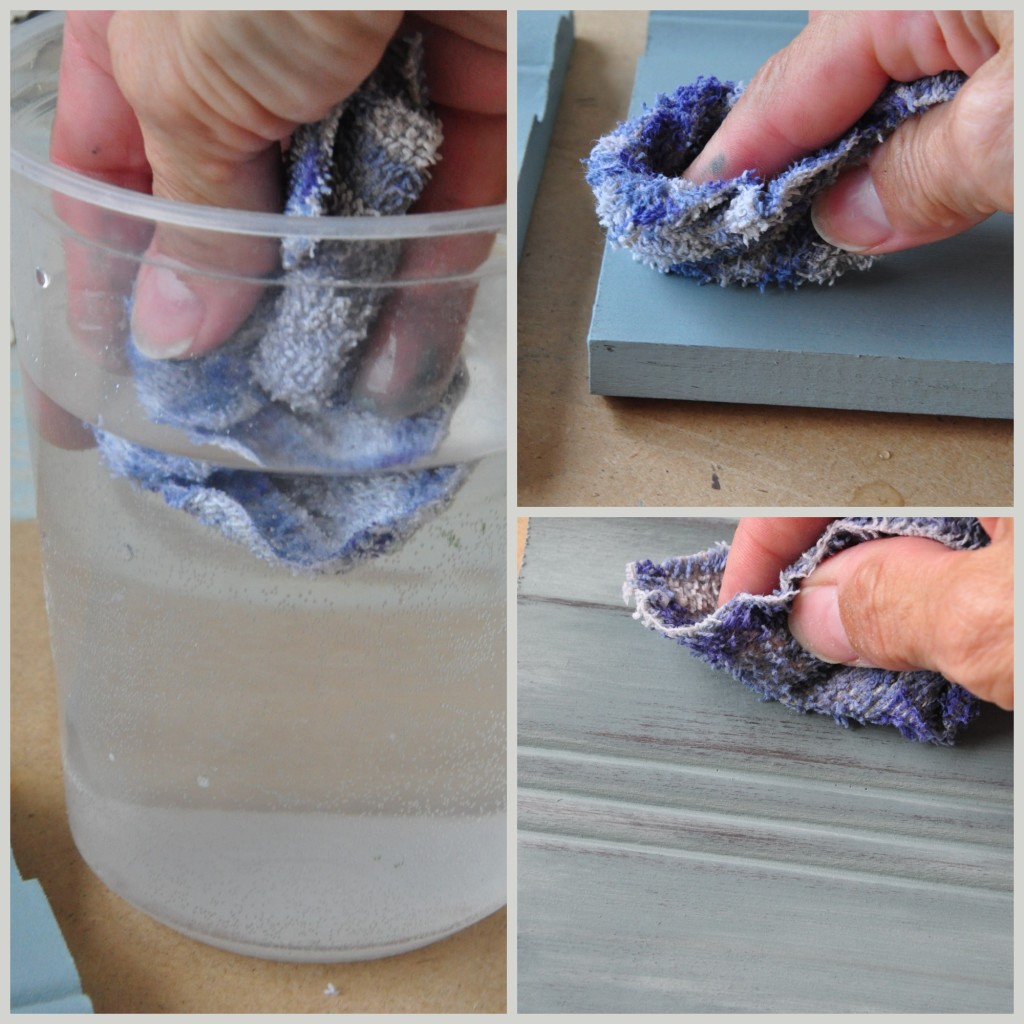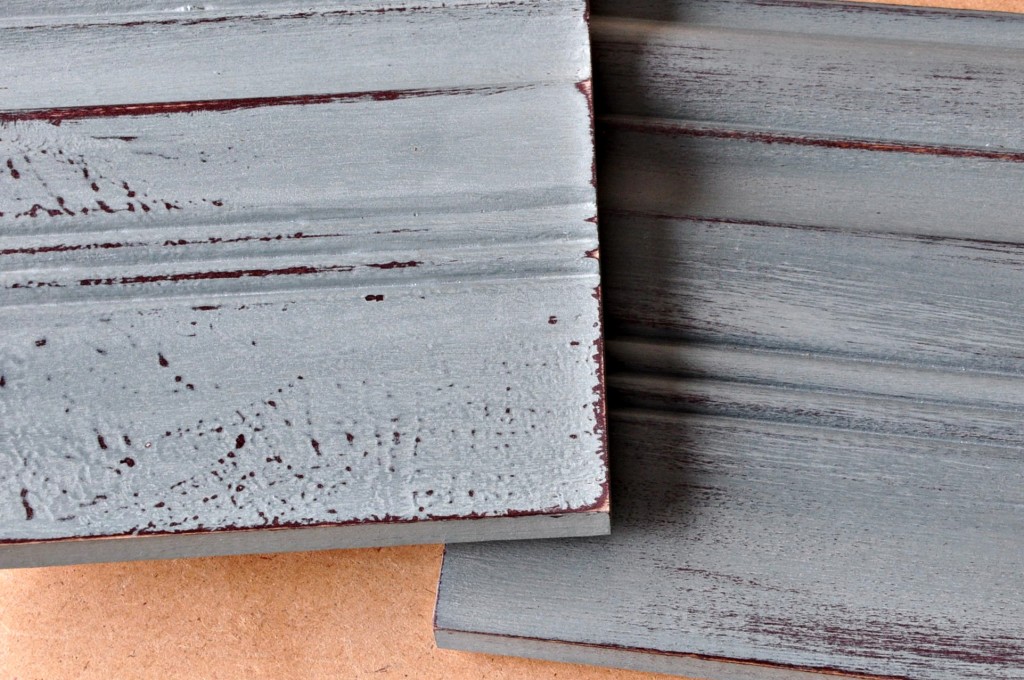How to paint with a Clay + Chalk Paint
Have you ever wondered how to paint with a clay and chalk paint? Creating a textured surface or a smooth surface is easy with a chalk type paint. Follow along as we take you step-by-step though the process of creating each of these time worn looks.

The sample boards above have been created using simple techniques to create a distressed textured look or a distressed smooth finish. Below are the items that were used for this tutorial.
Prepping to Paint With a Clay + Chalk Paint
If you would like to follow along with this tutorial, you will need:
- Two complimenting colors of paints. Wood Beam and French Toile from the Bungalow 47 Furniture Paint line were used for this tutorial.
- Two sample boards, or a practice piece of furniture.
- Your favorite paint brush.
- A cup of water, a rag or small cloth.
- A fine grit piece of sandpaper. We are using 220 grit sandpaper for this tutorial.
Mark the backs of your boards with a #1 and #2. We will be referring to each board by their numbers through the remainder of the tutorial.

Board #1 – Textured Finish
On the first board we will be creating a distressed textured look. The key to this look is to apply a heavy textured (or messy) base coat. This can be achieved by pouncing the paint brush to create texture or simply brushing the paint on using deliberate heavy (messy) strokes.

Board #2 – Smooth Finish
The second board will have the distressed smooth finish on it. On this board apply a smooth base coat by loading your brush first with the base color then dipping it in water. After that, lay the paint on the board (brushing with the grain) evenly.

Set the boards aside to dry completely. Notice the difference between the two boards?

After the Paint Dries Fully
After the base coat has dried, apply a thin top coat over the base coat on each board and set them aside to dry. This coat can be applied the same on both the textured board and the smooth board. Be sure NOT to apply the paint too thick. A thin top coat will be easier to distress through than a thick top coat.

Board #1 – Textured Finish
After the top coat on each board is dry, it’s time to distress. On board #1 (our textured finish) use a fine grit sandpaper to lightly sand through your top coat revealing the textured strokes from your base coat. The above example shows the artist holding the paper flat and sanding in a circular motion to reveal the textured base coat through the top coat.

Board #2 – Smooth Finish
Wet Distressing the Clay and Chalk Paint
To distress the ‘smooth finish’ board, use the wet distress technique. Take your rag or cloth and soak it with water. After wringing it out completely, use the damp rag to distress through the top coat to reveal the base coat color while smoothing the dry paint slightly. This will create a smooth time worn distressed look.

After the boards are distressed to your liking, buff each piece with a dry towel. To finish, apply a coat of Matte Finish or wax to ‘set’ the paint and complete the look.
Try Painting a Full Project
When applying these techniques to an entire piece of furniture, be strategic about where you add texture and where you distress. Apply texture to the entire piece or simply add it in a few areas to add interest. Keep working at it until you make it how you want. It’s easy to update if you feel it’s not perfect. Simply paint over an area and try again.
The best part is that a clay and chalk paint is more forgiving than using a latex. You can feel confident in knowing that you can manipulate your painted piece into how your want it to look. Whether distressing, adding texture, or painting a smooth finish, make it to suit you!
If you’d like ideas and inspiration on how to paint or decorate, check out our Pinterest boards.
Thanks for stopping by, Jill and Chantelle
